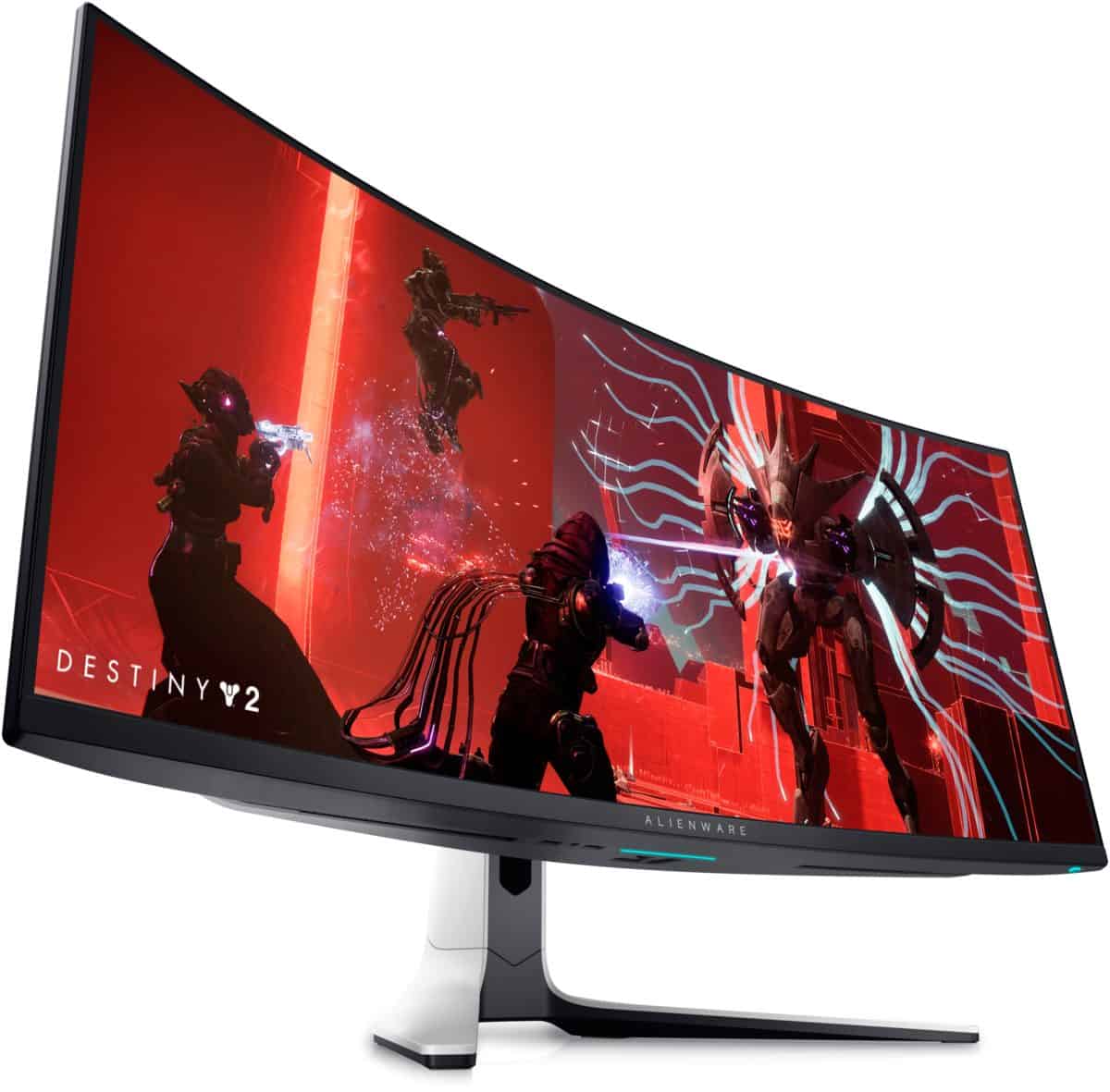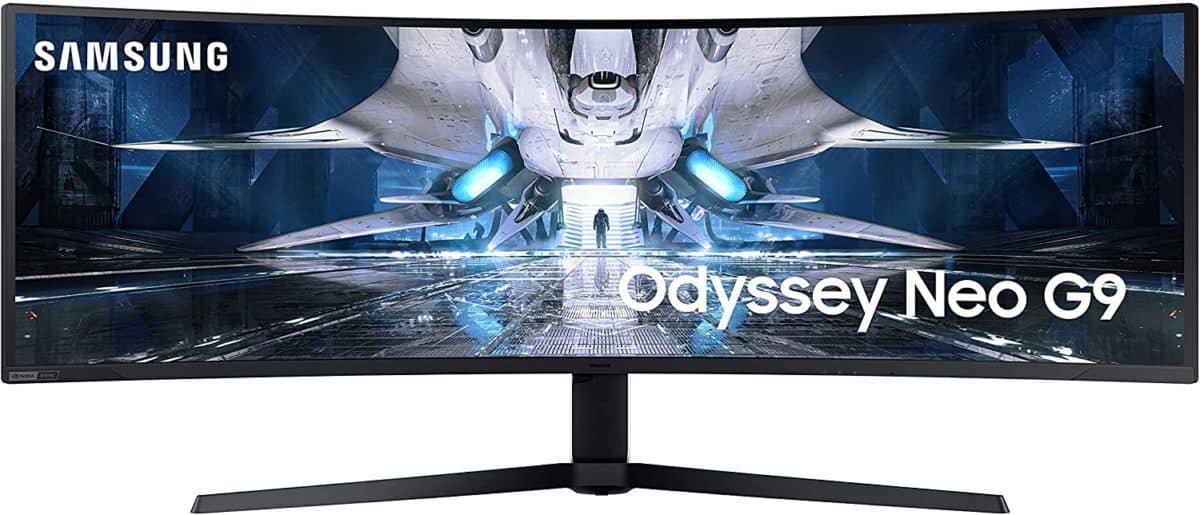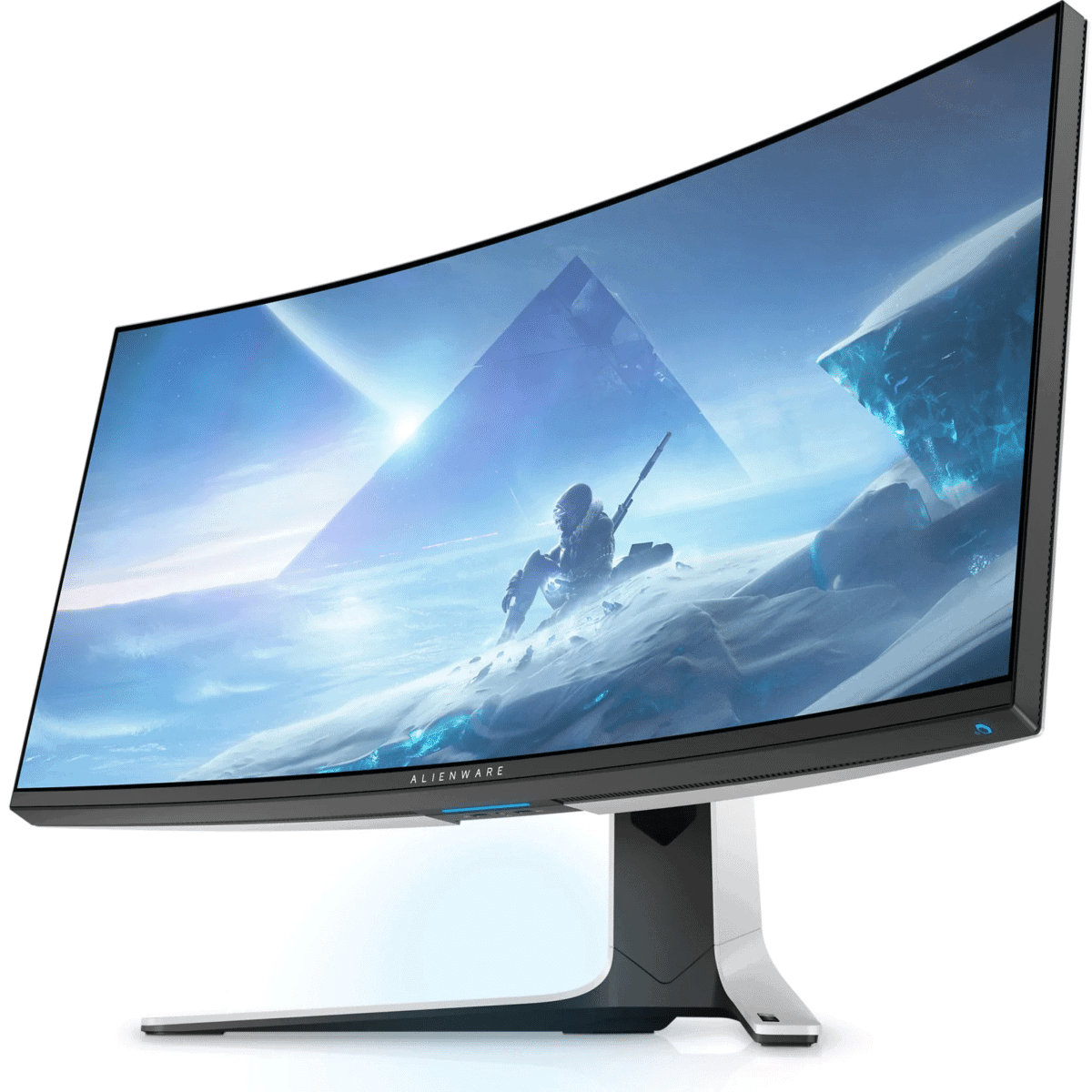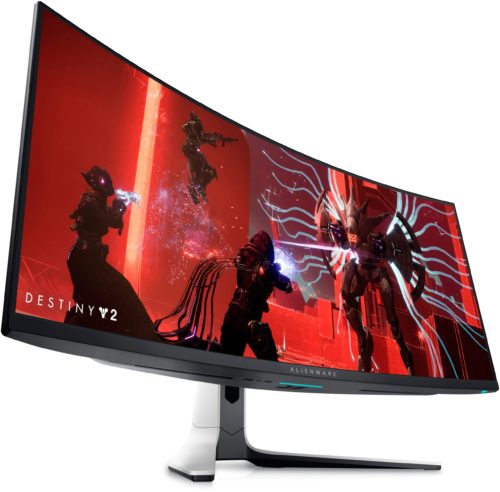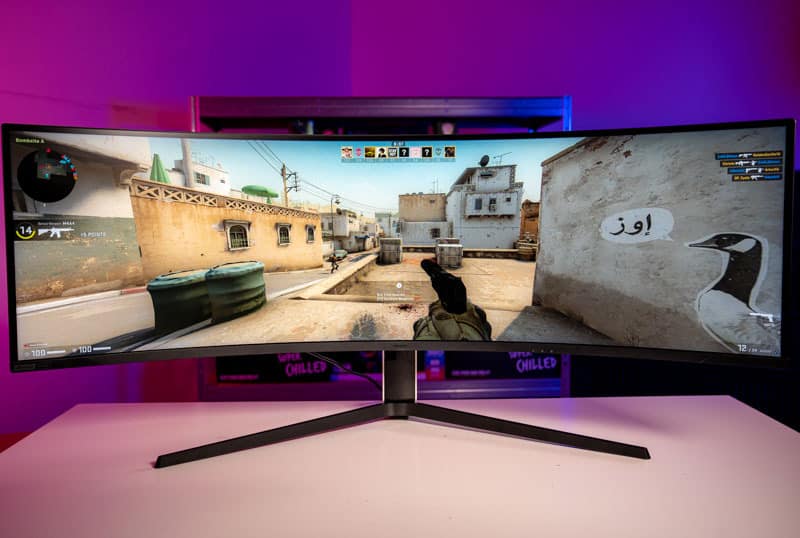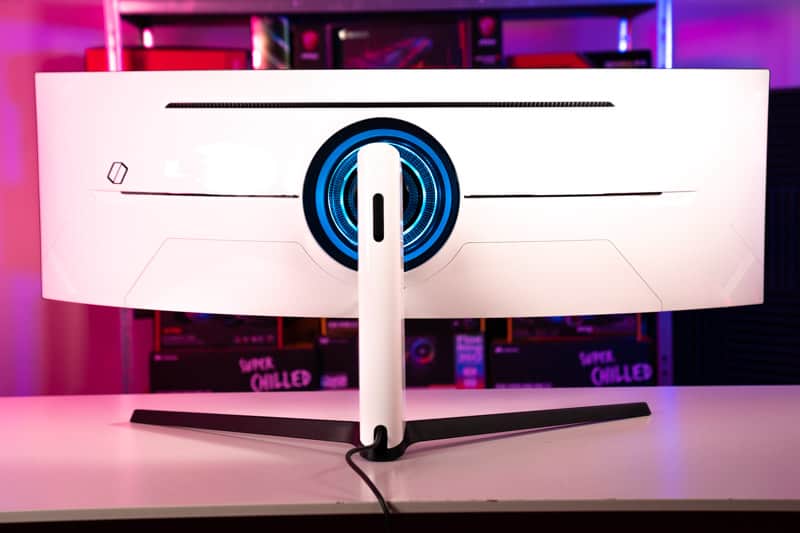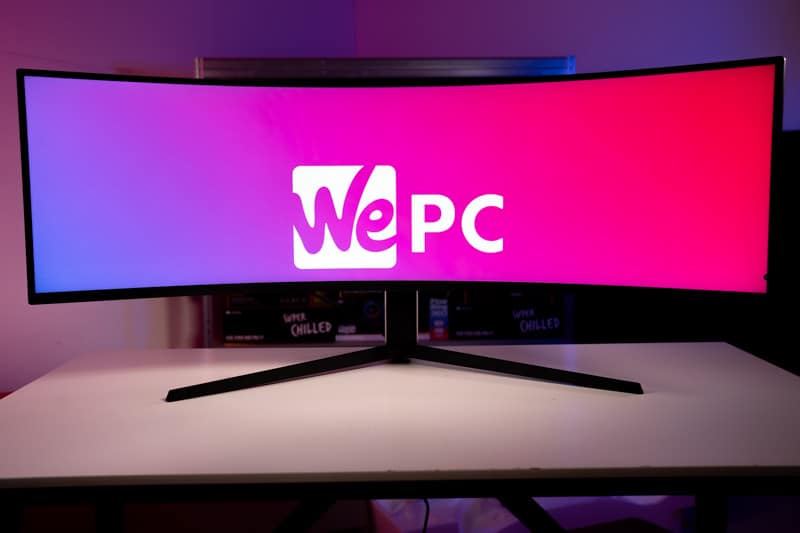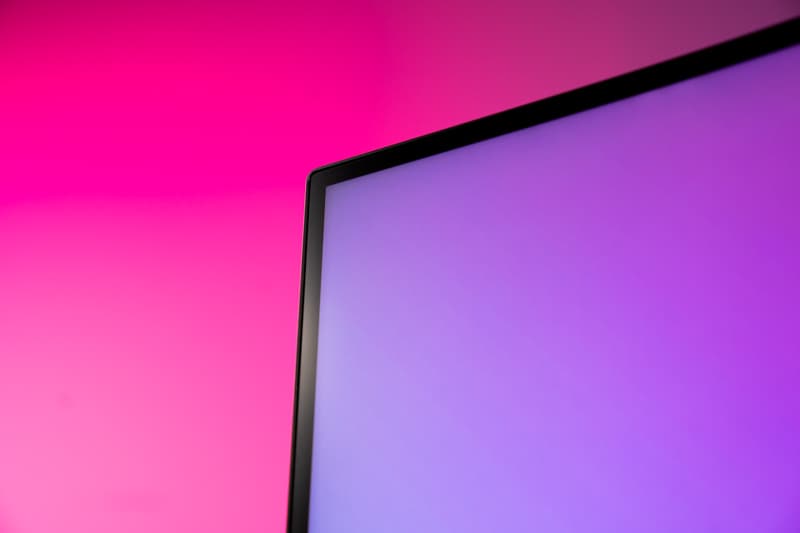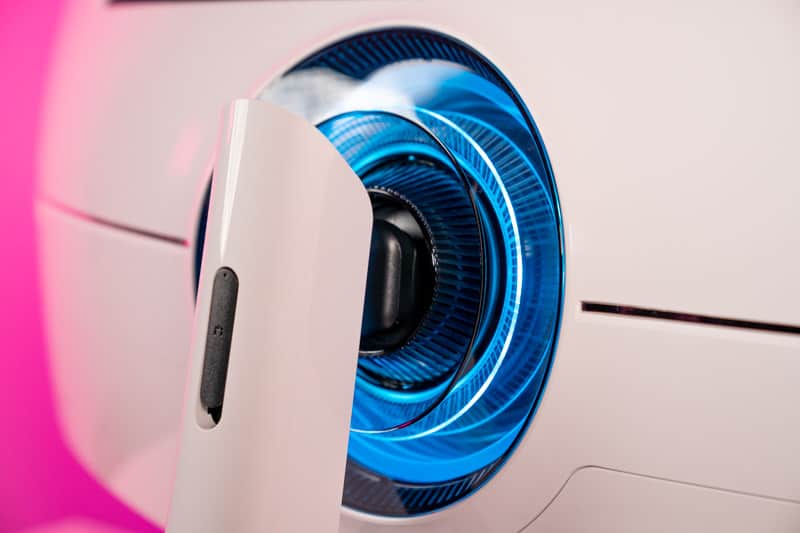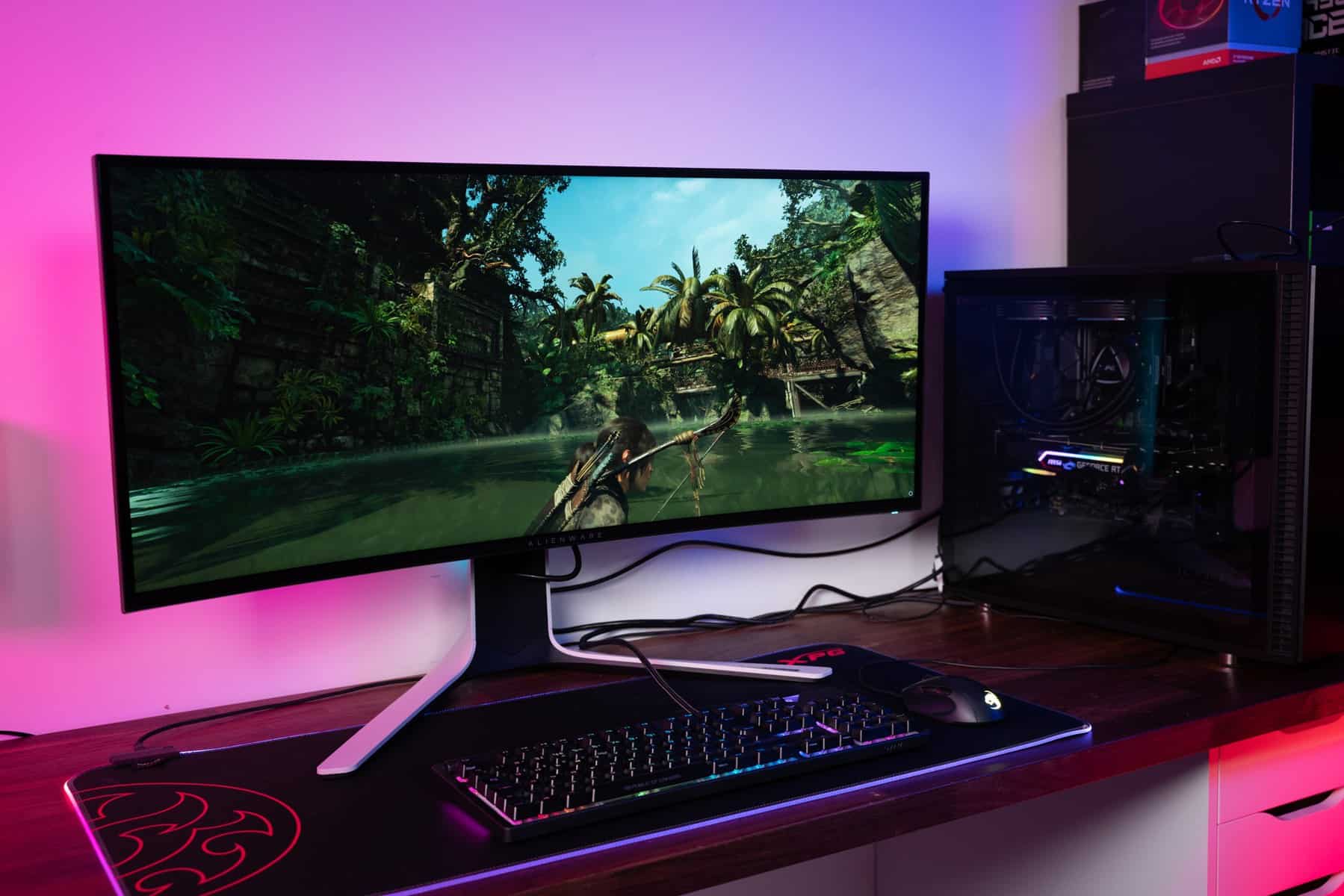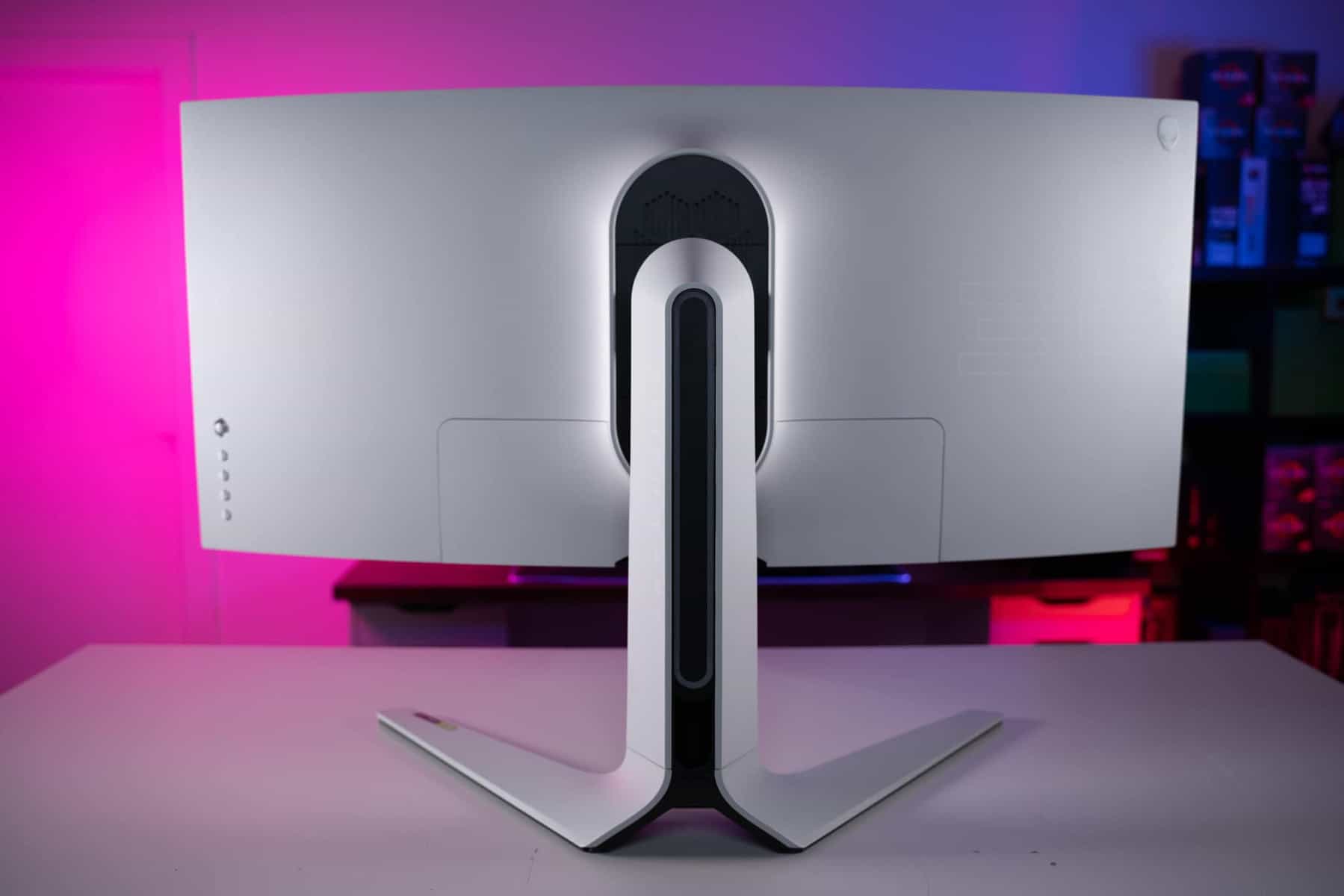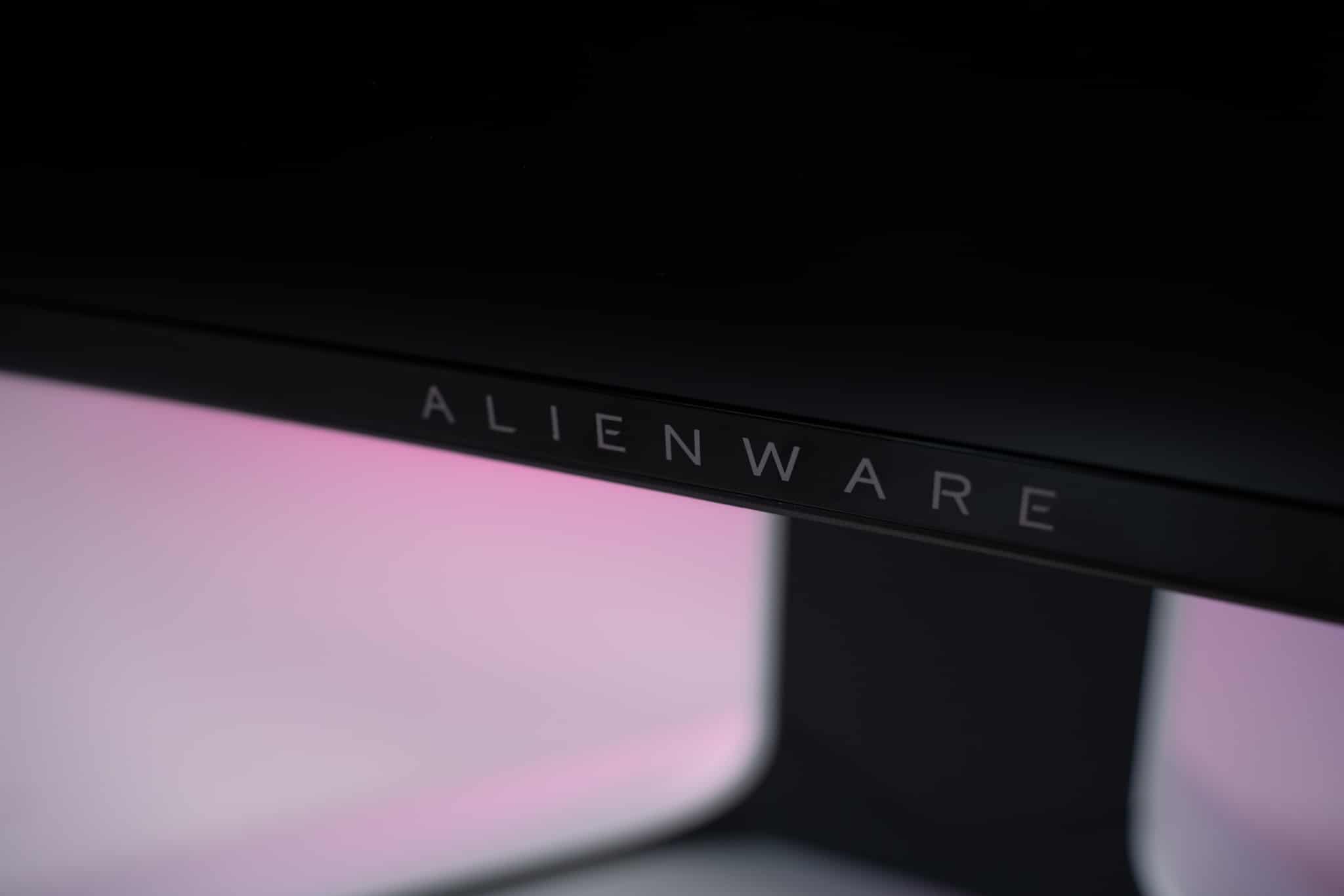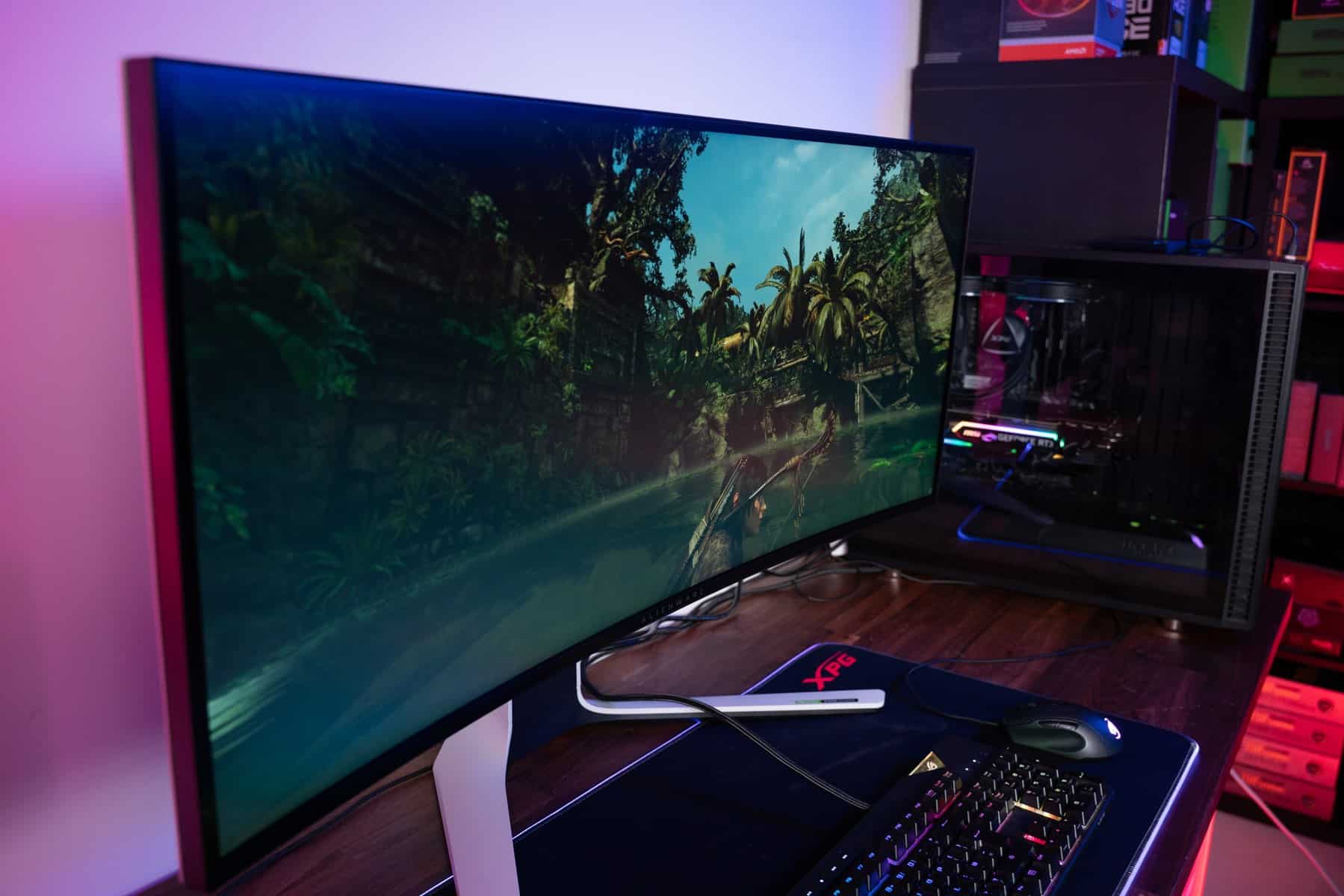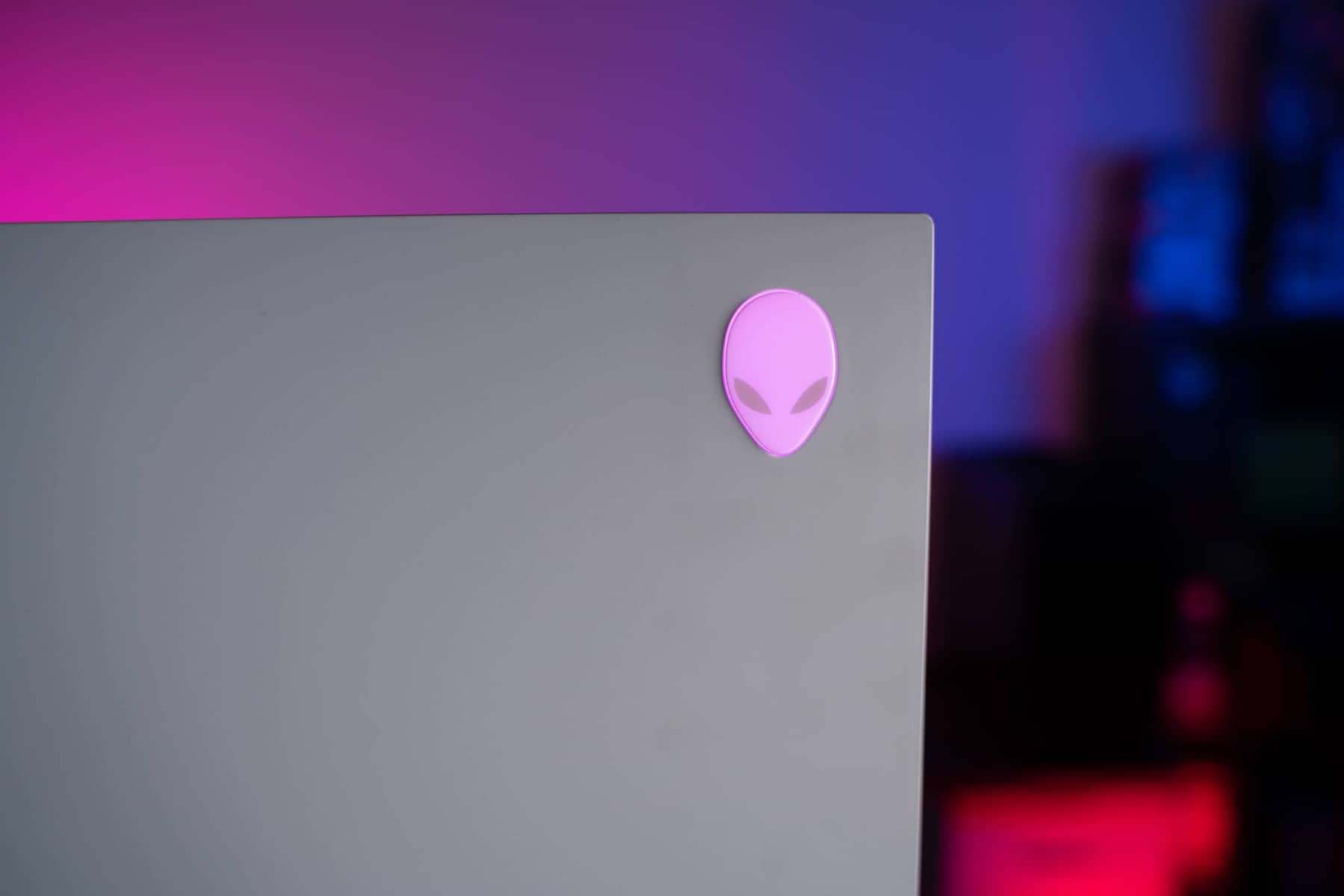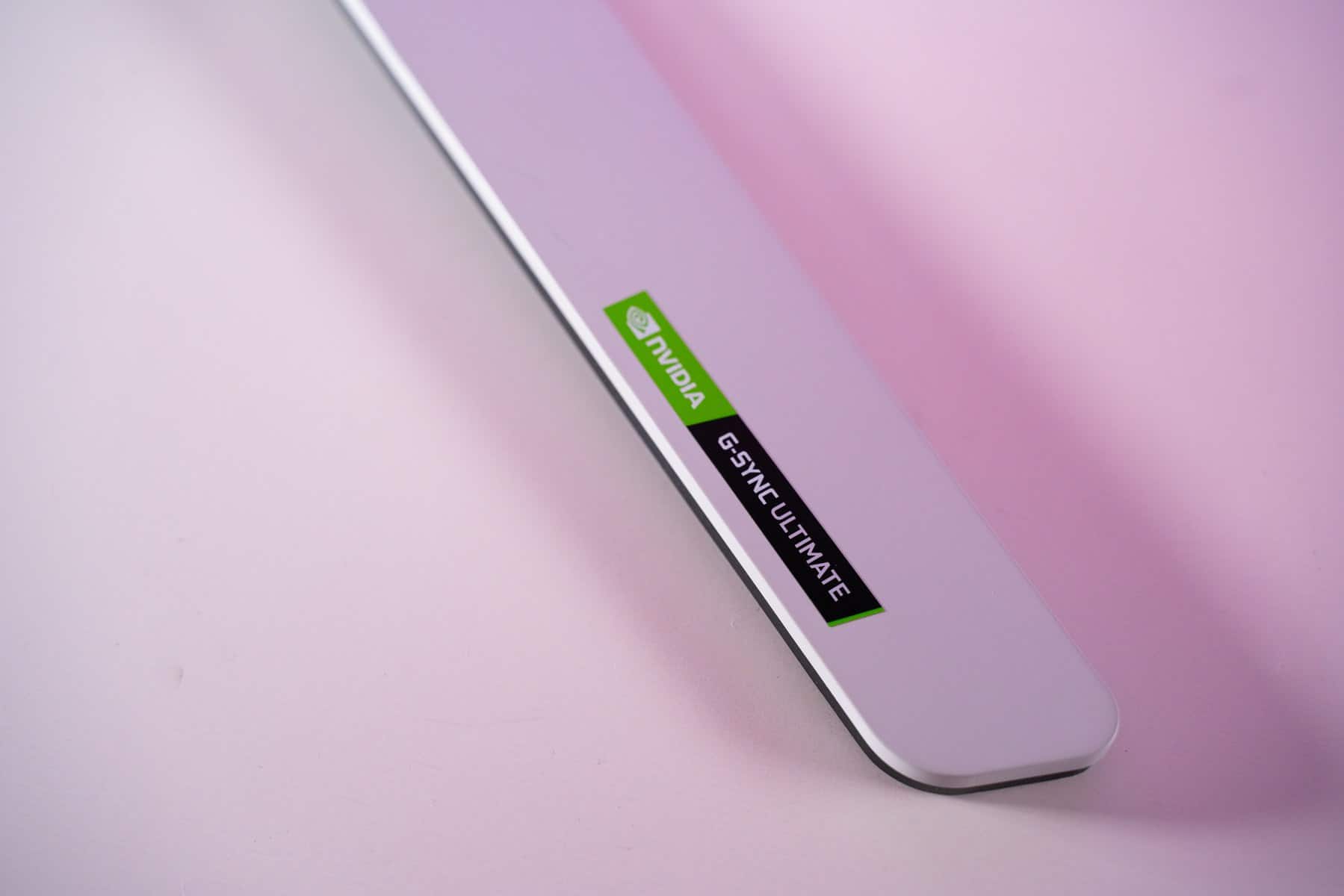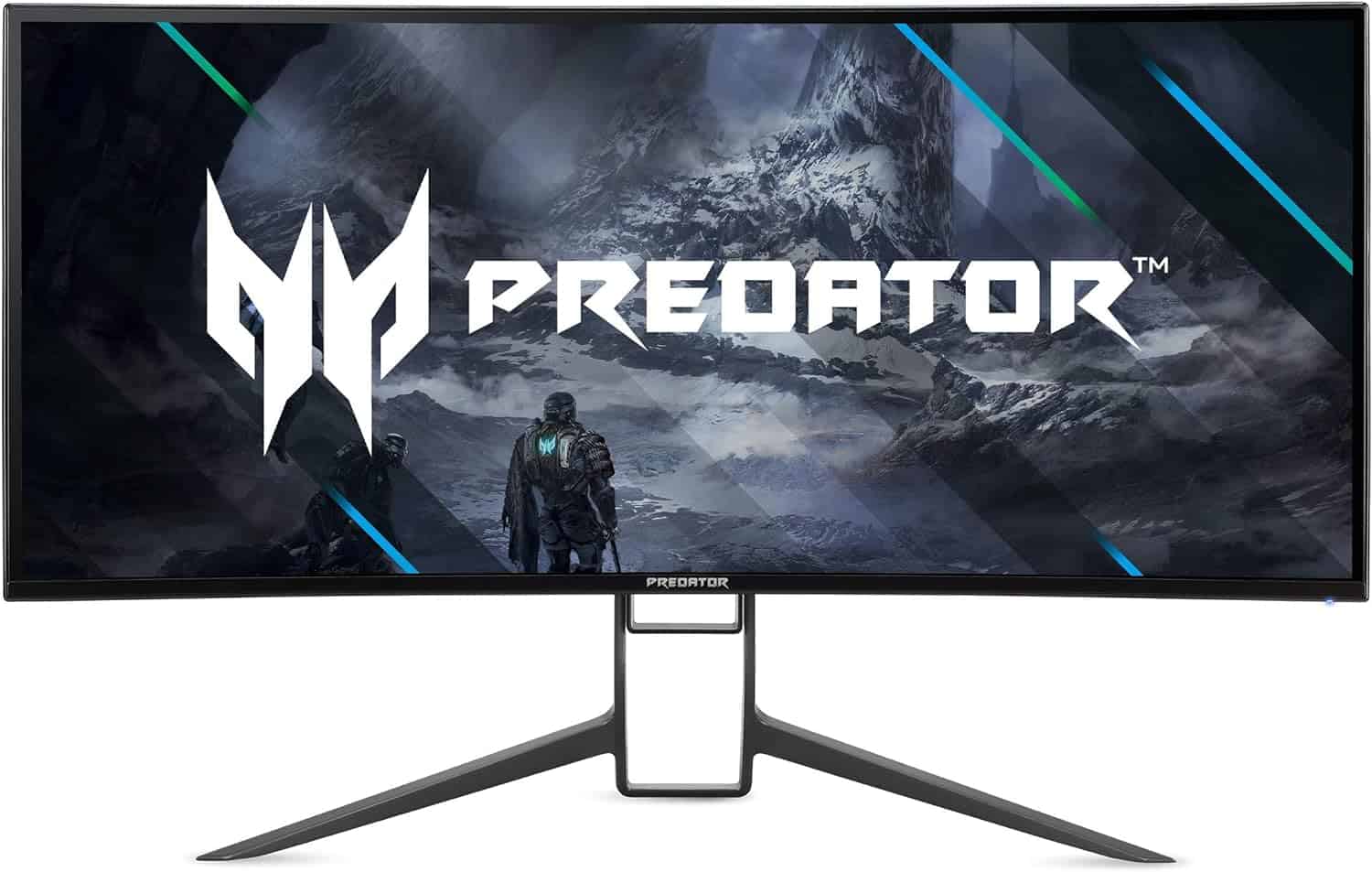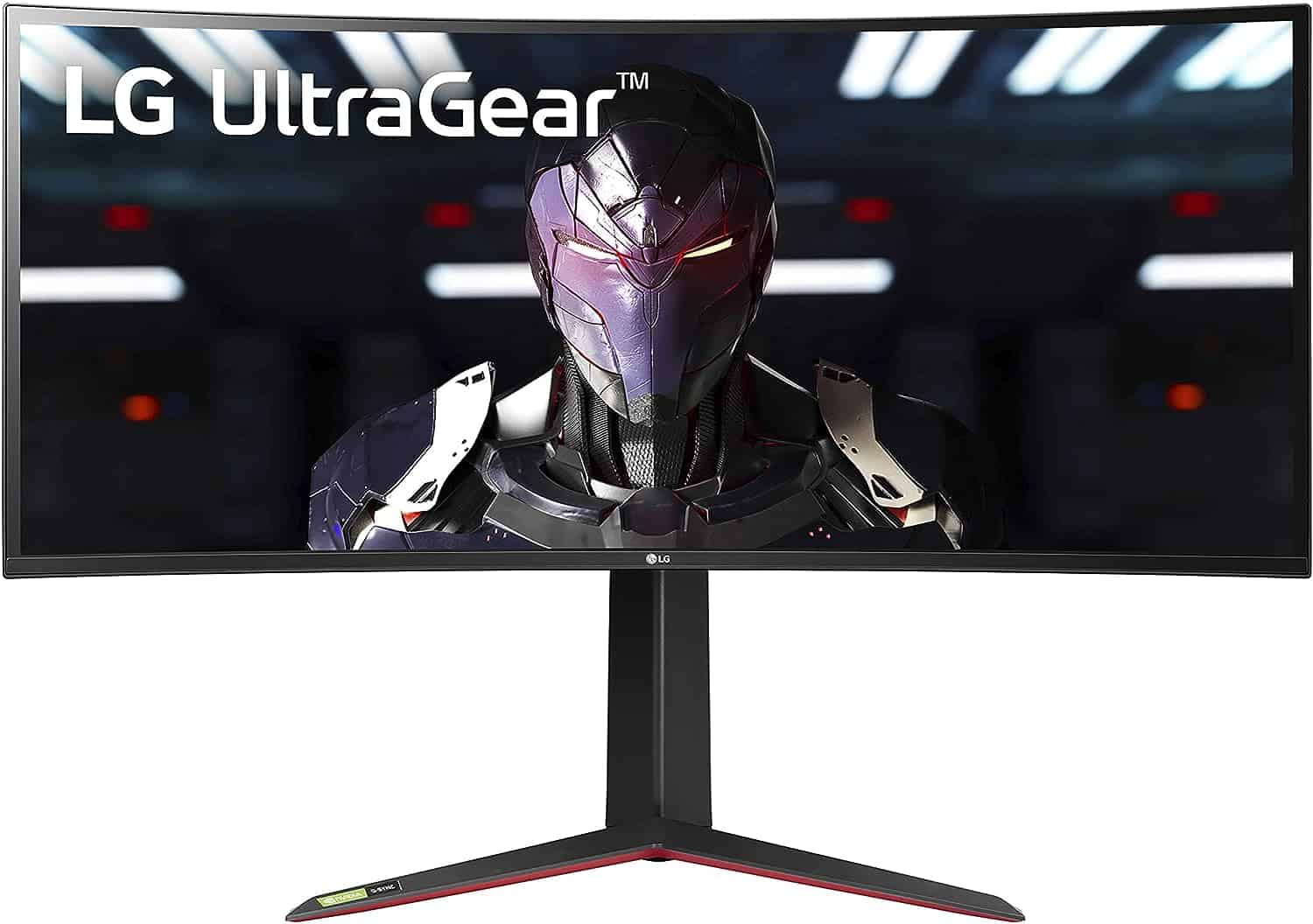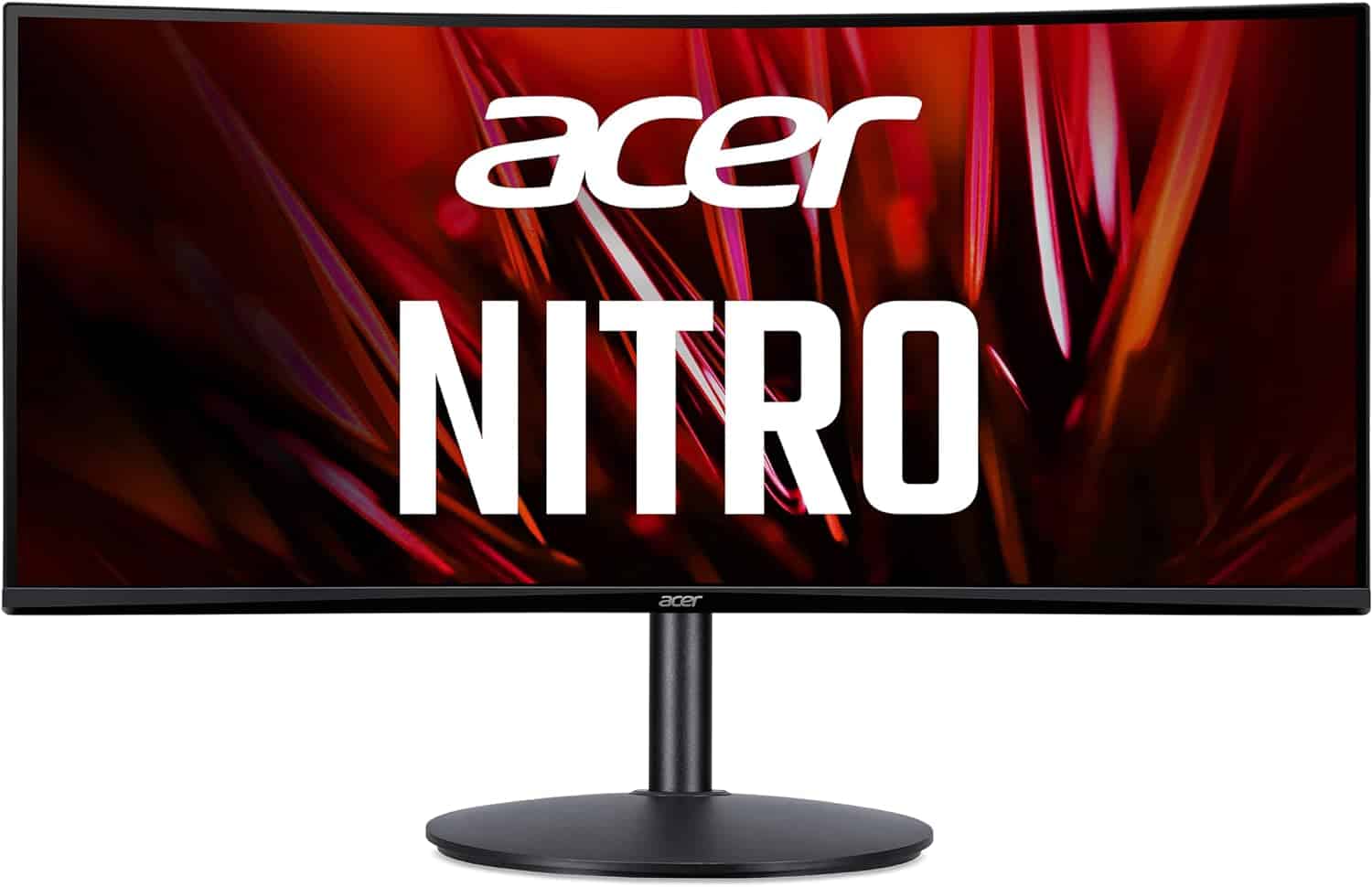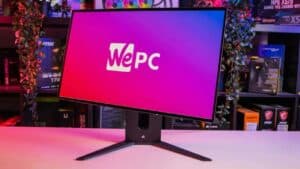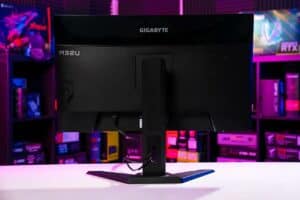Best ultrawide gaming monitor 2024 (21:9, 32:9, 240Hz, budget) – April edition
A closer look at some of the best ultrawide gaming monitors in today's market
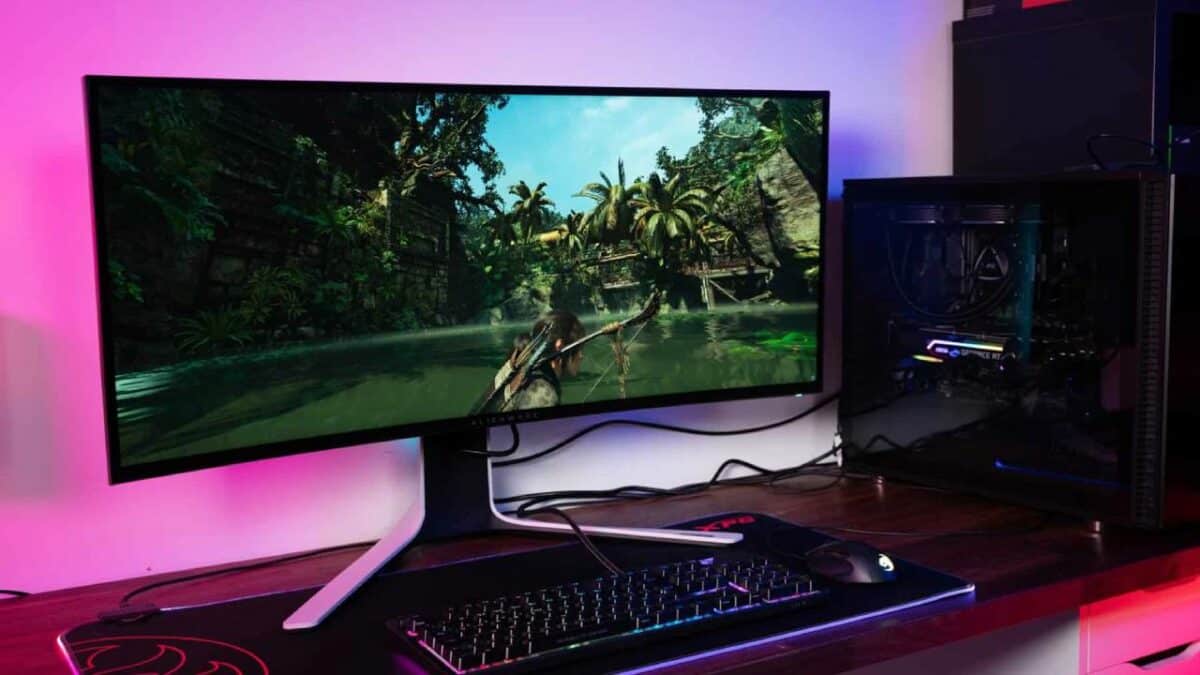
WePC is reader-supported. When you buy through links on our site, we may earn an affiliate commission. Prices subject to change. Learn more
We’ve been on the hunt for the best ultrawide gaming monitor, especially since we’ve seen them increase in popularity exponentially over the last couple of years, with technological advancements allowing us to take full advantage of their benefits. A lot of interest in ultrawide monitors has come from users with a dual monitor setup who previously needed two screens to accommodate their specific work/gaming needs. However, with a 21:9 aspect ratio and 3440 x 1440 resolution – now all bundled onto 34-inch screens – the need for dual monitors is near extinct. Right now, we think the best all-round ultrawide monitor is the Alienware AW3423DW. We’ll be updating our guides as much as possible to keep our top picks fresh and relevant.
There are plenty of fantastic ultrawide gaming monitor options out there these days, with many games now providing support for the wider aspect ratios. We can now even jump up to impressive 32:9 displays which really do offer everything dual-monitor users were asking for. Especially with horizontal-8K ultrawide monitors like the 57″ Odyssey Neo G9 hitting the market (hopefully you have a powerful graphics card to back it up).
Best ultrawide gaming monitor in 2024: in-depth reviews
There are some fantastic benefits to the market’s latest ultrawide gaming monitors which is why they’ve become such a fan favorite amongst the gaming community. Decent refresh rates, solid response times, and wide color gamut are all available in most of the newly released panels – helping boast a more immersive visual experience when compared to regular gaming monitors or curved monitors.
- Refresh rate: 175Hz
- Response time: 0.1ms GtG
- Screen size: 34″
- Resolution: 3440 x 1440
- Aspect ratio: 21:9
- Panel type: IPS
- Brightness: 350cd/m2
- Contrast ratio: 1,000,000:1
- Color depth: 8 bits
- Viewing angle: 178°/178°
- Color gamut: 135% sRGB, 98% DCI-P3, 100% Adobe RGB
- Backlight technology: W-LED
- Panel coating: Anti-Glare/Matte (3H)
- Curvature: 1800R
- VESA: 100 x 100mm
- Dimensions (WxHxD): 813 x 364 x 117.9mm (without stand) 813 x 560 x 273mm (Stand at max height) 813 x 429 x 273mm (Stand at lowest height)
- Inputs: 3 x USB 3.0, 1 x USB 3.0 (downstream; BC 1.2), 1 x USB 3.0 (Type-B), 1 x HDMI 1.4, 1 x DisplayPort 1.2, 1 x 3.5 mm audio jack (line out), 1 x 3.5mm audio jack (headphone)
Dell’s Alienware AW3423DW can be considered one of the best gaming monitors to hit the market in recent years, providing a high-spec QD-OLED panel with back up from Nvidia G-Sync Ultimate. The high level of responsiveness and visually-appealing Alienware design makes for a complete ultrawide package – particularly for gaming and content consumption.
- QD-OLED technology for higher peak brightness
- Rapid 0.1ms response time
- Excellent color accuracy; 99.3% DCI-P3 coverage
- Nvidia G-Sync Ultimate module built-in
- Potentially lower lifespan on QD-OLED technology
- High price tag, more than the FreeSync model (AW3423DWF)
The best QD-OLED monitor (still) goes to the this impressive Alienware panel, announced back at CES 2022 and one of the first gaming monitors to feature QD-OLED panel technology.
The AW3423DW features a similar design that we’ve seen from other Alienware monitors in the past, including the same wide V-shaped stand, light gray exterior, and RGB alien logo. However, this one features a black outer border that frames the central portion of the rear. Additionally, DELL has chosen to round the rear of the stand and move the RGB to where the stand connects to the monitor itself – reminiscent of the Odyssey monitors.
As far as performance goes, this monitor really does excel in most areas. It features the latest QD-OLED panel technology which merges the best qualities of both Quantum Dot and OLED – effectively creating a brighter OLED experience that is better at handling burn-in. Gaming will also feel incredibly fluid on this monitor thanks to the 175Hz refresh rate and low 1ms response time. On top of that, it features NVIDIA G-Sync Ultimate support, a 99.3% color gamut, and HDR 400 certification. The large 21:9 1800R curved display also enables users to become fully immersed in their virtual world.

- Refresh rate: 240Hz
- Response time: 1ms GTG
- Screen size: 48.8″
- Resolution: 5120 x 1440
- Aspect ratio: 32:9
- Panel type: VA (CSOT)
- Brightness: 2000cd/m2
- Color Depth: 10-bit
- Viewing angle: 178°/178°
- Color Gamut: 125% sRGB / 95% DCI-P3
- Backlight technology: Mini LED (2048 dimming zones)
- Panel Coating: Anti-Glare (Matte)
- Curvature: 1000R
- Dimensions (WxHxD): 1147.6 x 363.5 x 291mm (without stand) 1147.6 x 550 x 416mm (Stand at max height) 1147.6 x 423 x 416mm (Stand at lowest height)
This is a ‘super’ ultrawide gaming monitor, which basically means we’re at the 32:9 aspect ratio instead of 21:9. It features mini-LED backlighting to allow for excellent HDR visuals which shine bright in any environment. Aside from giving the best immersive gaming experience, we’d also recommend this display for daily workflows as well, offering a higher lifespan than OLED.
- Fast 240Hz refresh rate is very smooth
- Wide 32:9 aspect ratio essentially replaces your dual monitor setup
- Super immersive 1000R screen curvature
- Excellent performance for gaming and work
- Extremely pricy
- Large desk required
- Some monitor wobble is present
Now here’s a 32:9 aspect ratio pick. The 49 inch behemoth from Samsung – their Odyssey Neo G9 we reviewed. This monitor was one of a kind on its release – providing esports levels of response to the super ultrawide marketplace. That’s right, this 49 inch monster comes equipped with a stunning dual-QHD /1440p screen resolution alongside a 1ms response time and 240Hz refresh rate. That puts this monitor alongside some of the best esports-tailored monitors the market has to offer – you know, if you remove the latest 360Hz monitors, that is.
Aesthetically, we’re huge fans of this monitor. The 49 inch curve is rated at 1000R, making it hugely immersive no matter what title you’re playing. Even generic browsing and light productivity tasks feel great on this thing. The rear of the monitor is a sea of aesthetic features, including a fully RGB vortex at the centre of the stand that contrasts nicely with the white exterior of the panel itself. There is a lot of plastic used on this panel, but don’t let that put your off – it feels extremely robust and durable.
Moving onto performance, the Odyssey Neo G9 really does offer a superb experience. The 240hz refresh rate is going to provide you with all the response you need to play the most demanding, fast-paced titles out there. That means competitive Counter-Strike and COD are now a thing on super ultrawide displays. Yes, this may not be the best monitor for those games – but you can select a custom resolution and use black bars if you really wanted to. A low 1ms response time ensures no ghosting occurs and G-Sync provides all the liquid smoothness you could want.
For us, if you’re in the market for a super ultrawide gaming monitor, there really isn’t anything out there quite like this, unless you opt for the OLED G9 alternative. And whilst it isn’t the cheapest monitor available, it definitely offers excellent value for money.

- Refresh Rate: 144Hz (DisplayPort) Or 85Hz (HDMI)
- Response time: 1ms (GTG)
- Screen size: 37.52″
- Resolution: 3840 x 1600
- Panel type: Nano IPS
- Aspect ratio: 21:9
- Panel type: Nano IPS
- HDR: HDR600
- Brightness: 600cd/m2
- Contrast ratio: 1000:1
- Color Depth: 10 bits
- Viewing angle: 178°/178°
- Color Gamut: 130.6% sRGB, 95% DCI-P3
- Backlight technology: W-LED
- Panel Coating: Anti-Glare/Matte (3H)
- Curvature: Curved
- VESA: 100 x 100mm
- G-sync Range: 24Hz – 144Hz
- Dimensions (WxHxD): 894 x 399 x 130 mm (without stand) 894 x 449 x 293 mm (With stand)
- Inputs: 1 x USB 3.2 (Type-B; Gen 1; upstream), 4 x USB 3.2 (Type-A; Gen 1; downstream), 2 x HDMI 2.0, 1 x DisplayPort 1.4, 1 x 3.5mm audio out (headphones), 1 x 3.5mm audio out (line-out for speakers)
38 inch gaming monitors are a little rarer, but the Alienware AW3821DW fits this niche perfectly. It’s older than some other options in this guide, but it holds up to this day as excellent value for money. The extra screen space may be just what you’ve been looking for if you want to fully embrace an ultrawide upgrade, but 34″ isn’t quite enough. It works well for gaming as well as design work thanks to the color-accurate IPS panel.
- Immersive gaming experience
- Wide color gamut on IPS panel
- Quick 144Hz refresh rate & low 1ms response time
- Great for gamers and productivity users alike
- Large footprint; requires a good amount of desk space
- Small amount of monitor wobble
The Alienware AW3821DW is a high-performance gaming monitor to come out of DELL’s arsenal. It comes equipped with all the high-end features you could expect from a top of the line monitor, including a 144Hz refresh rate, true 1ms response time, and HDR600 certification. If you want the most well-rounded ultrawide gaming monitor available, look no further.
The AW3821DW comes equipped with Alienware’s ‘Legend’ design language, also seen on their most recent laptops and desktops. It provides a stunning experience thanks to a 1800R 37.5″ curved panel that just breathes immersion. With a pale gray exterior and nicely thought out RGB, this monitor really is one of the nicest we’ve seen in some time.
Looking at gaming performance, the AW3821DW really does tick all the right boxes. It has a highly responsive Nano IPS panel that not only showcases accurate color reproduction but also provides you with the speed needed to play highly competitive titles like Counter-Strike and COD. Furthermore, the HDR600 certification it comes equipped with adds a ton of detail to dark shadows and bright lights, giving you another level of immersion.
Additional features and specs include a 3840 x 1600 screen resolution, 600 nit peak brightness, 10 bit color depth, and an extremely wide color gamut which is great for color-accurate productivity tasks.
Ultimately, it’s hard to say anything bad about this monitor. The only real negative we could find when testing it was the large amount of desk real-estate it occupied. Other than that, this monitor is one of the best on the market – in any category.
- Refresh rate: 180Hz
- Response time: 0.5ms
- Screen size: 34″
- Resolution: 3440 x 1440
- Panel type: IPS
The Acer Predator X34 is a great alternative if you’re looking for a highly-responsive panel for gaming, yet excellent specs for designers from the IPS panel. It boasts a high refresh rate and fast response time for 21:9 gaming, mixed with an impressively-wide color gamut that covers 98% of the DCI-P3 color space. It’s a great mixed-use option in our opinion.
- Immersive gaming experience
- Stunning color accuracy with DCI-P3 98% coverage
- Nvidia G-Sync & Reflex Analyzer
- Rapid 180Hz refresh rate and 0.5ms refresh rate
- Pretty basic VESA DisplayHDR 400 certification
- Quite pricey compared to the competition
- Weak built-in speakers
The Acer Predator X34 might be a little older, but it still holds up – especially with this latest model. Acer have been producing some fantastic ultrawide monitors in the past few years, something we found out when we reviewed the Predator X38 S – unfortunately this larger model is harder to source these days. Luckily, Acer have knocked it out of the part with the X34 regardless. It really does tick all the right boxes.
It offers a fast refresh rate of up to 180Hz, which really does rival some of the best gaming monitors currently on offer. Alongside a high refresh rate, this monitor also offers a super quick 0.5ms response time, providing a smooth overall gaming experience with almost zero ghosting in the most extreme of settings. Aesthetically, the Acer predator X34 is in a league of its own, bringing a futuristic styling to the table that wouldn’t look out of place on a spacecraft. Sharp angles contrast nicely with the smooth curve on the 34″ display, creating a nice balance between gaming and everyday aesthetics.
Design aside, it’s hard to knock this monitor from a performance standpoint – it pretty much does it all. The quick response allows users to play fast-paced games without experiencing annoying artifacts such as screen tear and ghosting. Colors look fantastic too from a wide range of angles on this IPS panel, especially with a DCI-P3 98% color gamut rating for accuracy. If you’re looking for a solid ultrawide gaming monitor out there and don’t mind spending a small fortune, the Acer Predator X34 will serve you well.
- Refresh rate: 144Hz (160Hz OC)
- Response time: 1ms
- Screen size: 34″
- Resolution: 3440 x 1440
- Panel type: Nano IPS
- HDR: VESA DisplayHDR 400
- Adaptive Sync: Nvidia G-Sync / AMD FreeSync Premium
The LG UltraGear 34GP83A-B is a great choice of gaming monitor if you want to save cash without too many compromises. You can consider it to be our best mid-range option, replacing the older 34GN850-B, though both displays are largely the same. The Nano IPS panel offers excellent color accuracy and it’s a solid option for gaming as well.
- Good value for money; often discounted
- Nano IPS panel
- G-Sync compatible & FreeSync premium for variable refresh rate
- 98% DCI-P3 color accuracy
- Average HDR performance
- Low contrast ratio and lacks local dimming
The LG UltraGear 34GP83A-B 34″ ultrawide monitor is still one of the best gaming monitors in a long time as far as value is concerned. 3440 x 1440 ultrawide resolution, 144hz refresh rate, and a 1ms response time, all wrapped up in a stunning IPS panel make this monitor worth mentioning in our best ultrawide selection. The first thing that struck us with this monitor was how good it looks just sat there on the desk. The stand looks well built using decent materials and has good functionality with its ability to move up, down, tilt backward, forwards, and swivels left and right.
For such a large monitor you’d expect a fair bit of wobble when gaming with it, this isn’t the case with the 34GP83A-B though. The stand has been designed in such a way to eradicate any unnecessary screen wobble. Even when forced it was extremely sturdy which is always comforting when it comes with such a high price tag. The display itself is fantastic and provides DCI-P3 98% color gamut with DisplayHDR 400. The brightness is 400 nits and it has an 8-bit color depth which, when all paired together, produces a solid display for both gaming and media viewing.
The monitor is G-sync compatible and features FreeSync Premium, so you won’t have to worry about any screen tearing. The display when gaming will be smooth across all games and hugely impressive. Overall, we find this monitor superb for both gaming and working for long periods of time. The 1ms/144hz (or overclock to 160Hz) specs give gamers a highly immersive experience that they will not be disappointed with.
- Refresh tate: 165Hz
- Response time: 1ms
- Screen size: 34″
- Resolution: 3440 x 1440
- Panel type: VA
- Aspect ratio: 21:9
- Adaptive Sync: AMD FreeSync Premium
- Display connectivity: HDMI 2.0 (x2) / DisplayPort 1.4 (x2)
If you’re working with a limited budget, you may want to consider the Acer Nitro XZ342CU, a decent ultrawide that doesn’t break the bank. Sure, it doesn’t come with the same high-spec as others in this guide, but you still gain excellent gaming specs with a high refresh rate and fast response time. Compared to others, it is mostly held back by its VA panel.
- Budget-friendly – great as a first ultrawide
- Good ergonomic design
- Fast refresh rate and response time for gaming
- Supported by FreeSync Premium
- Poor peak luminance
- VA panel produces worse colors than IPS and OLED
If you want a good gaming experience without having to break the bank, the Acer Nitro XZ342CU might be the perfect pick for you. Whilst it doesn’t blow the doors off (from a performance standpoint) it definitely ticks a lot of the right boxes when it comes to value.
Aesthetically, the Nitro is fairly limited and follows the trends set by older Nitro ultrawide iterations. Its construction is heavy on plastic and features are few and far between. The stand offers nice versatility with height/tilt adjustments, and even 360° swivel action – though there is a bit of wobble throughout its design. That being said, we quite like the simplistic design of this monitor. It isn’t overly gamey or boring – it feels like a nice balance between the two.
Design aside, performance is where this monitor starts to create value. At the heart of this display lies a VA panel that has acceptable colors right out the box. More impressive, however, is the 165Hz refresh rate and extremely low response time that pair together to provide a liquid gaming experience, no matter what title you’re playing. Furthermore, with low input lag and AMD FreeSync Premium support, this monitor doesn’t suffer from annoying screen artifacts like ghosting and screen tear.
Best of all, this monitor comes in at an absolute steal, around $300 cheaper than its closest rival in this particular guide. That makes the Acer Nitro XZ342CU incredibly good value for money.
Things to consider when buying an ultrawide monitor
Selecting the correct monitor for your specific needs and requirements can be a stressful experience. Fear not though, our team have tried and tested the best ultrawide gaming monitors in today’s market to make the choice much easier.
Below we have listed the key areas that need consideration when looking to purchase a gaming monitor:
Screen resolution
Screen resolution, in a nutshell, is how many pixels can be displayed at any one time on the monitor in reference. As a general rule, the image quality of a higher resolution monitor will be far greater than that of a lower resolution monitor. So, to put that into context with ultra-wide monitors, higher resolutions mean more information on the screen and crisper images overall. However, be aware, these resolutions will be much more taxing on your PC’s GPU.
Resolutions in ultra-wide monitors vary from 2560×1080, 3440 x 1440, 3840 x 1600, and 5120 x 2160 (better known as 4K). Each one will perform differently within real-world gaming situations so making sure the screen resolution matches your PC’s performance is an area that could save you hundreds of dollars respectively.
Ultimately, choosing the right screen resolution for your needs is going to come down to budget and PC specifications. If you can accommodate for both these factors, you’re laughing!
Aspect ratio
As most will probably already know, the aspect ratio is a proportional measurement between an image’s height and width. In monitors, aspect ratios vary depending on the shape of your display and allow consumers to decide whether that monitor is right for their needs.
Common aspect ratios include:
- 4:3
- 16:9
- 21:9 (Ultrawide)
- 32:9 (Super ultrawide)
Refresh rates
A refresh rate is a measurement of how many times your screen refreshes its image per second. Modern monitors have rates between 60 and 240 and are measured in hertz. This is particularly important for gamers, as a low refresh rate can produce what is commonly known as screen tearing.
Screen tearing occurs when your GPU sends more frames per second to your monitor than it can handle, producing two images in one refresh. To combat this, you either cap your FPS to the refresh rate of your monitor or buy a monitor with a higher refresh rate which matches your FPS. However, you can see how this could be problematic if you need to decrease your FPS.
Nvidia G-Sync and AMD FreeSync are technologies that have been incorporated into new monitors to help reduce the effects of screen tearing.
Response time
Response time is a measurement of how fast your monitor’s pixels can display a change from black to white, and back to black again. It can also be measured in GTG, (Grey-to-grey) which refers to how fast your monitor can change from one shade of grey to another.
Milliseconds are the standard form of measurement for response time and can vary from anything between 8ms to 1ms. As you’ve probably worked out by now, a lower response time is much better than a higher one.
So, how does this affect me as a gamer? Good question.
Longer response times can result in display ghosting which is where you can see the remains of trails from a moving image because your pixels took too long to change. As a gamer, who wants to be completely immersed in their games, screen ghosting is a real problem as they produce quite obvious visual defects.
If you’re looking for a great gaming monitor we would highly recommend purchasing a display with 4ms or under to help eradicate any distracting, off-putting visual defects caused by screen ghosting.
Panel type
Panel type can be a little daunting and seen as quite technical by some people, but it’s really not. Different panels offer different features and benefits and drastically alter the final price of the monitor in question. It will contribute to the response time and image clarity as well.
| Panel type | Description |
|---|---|
| TN | Twisted nematic panels have the lowest response times but don’t have the best image quality or viewing angles. |
| IPS | In-plane switching panels have brilliant viewing angles, solid color reproduction, and as a general rule have higher response times than TN. |
| VA | Vertical Alignment panels are a compromise and mixture of the two. Not considered the best for gaming but do offer a solid budget option. |
Our recommendation when looking at buying a gaming monitor is to stick to IPS as they offer the best image quality and color reproduction. However, there’s nothing wrong with the VA or TN panels if you find the right one. Curved monitors (like many ultrawides) tend to be VA panels, so this is something to think about.
Ultrawide support in games
If you’re looking to buy an ultrawide display, specifically to serve as a gaming monitor, it’s worth making sure the games you’re looking to play can accommodate the wider aspect ratio. If not, you’ll find your viewing experience tarnished by black dead space on either side of the display. Many modern game titles will support these wider ratio’s but it’s always worth checking before making a purchase. Maybe you want to ask yourself – does Elden Ring support wide aspect ratio? Or, should you use a ultrawide monitor for Lost Ark?
We also now need to mention the 32:9 aspect ratio, which is now a feature of some high-end displays. This is also referred to as ‘super ultra-wide’, and is in effect two 16:9 monitors side by side – without the annoying bezel in the middle. Although games which support 32:9 are less common than 21:9, it is definitely picking up in popularity.
More and more games are supporting ultrawide, even games which which were first designed for 16:9 later being updated. Make sure if that support extends to 32:9 if necessary! Even if official support isn’t there, you can always look for ultrawide fixes from dedicated fans on your particular game of choice.
Do next-gen consoles support ultrawide monitor aspect ratios?
The current generation of consoles – PlayStation 5 and Xbox Series X/S – do not officially support ultrawide monitor aspect ratios. These consoles are optimized for 16:9 aspect ratio displays, which are the most common type of display on the market.
That being said, it is possible to use an ultrawide monitor with these consoles, utilizing premium ultrawide monitor features. Some games may also support ultrawide resolutions, but this is entirely up to the individual game developers.
It is worth noting that the use of ultrawide monitors for gaming on consoles is not as prevalent as it is on PC gaming, where many games have added support for ultrawide aspect ratios.
34 inch vs 49 inch ultrawide monitors
At this point, you might be asking yourself which ultrawide screen size best suits your needs – 34-inch or 49-inch. The decision is extremely difficult – making the right choice really comes down to what you plan to use your monitor for.
Let’s start with the pros of the 34-inch display. On average, more games will support the native resolution of a 34-inch gaming monitor. If you’re the sort of player that likes to indulge in a tonne of different titles, this is definitely worth considering when buying your next ultrawide gaming monitor. Furthermore, 34-inch monitors, on average, are much more affordable than 49-inch monitors – for obvious reasons. They also don’t take up nearly as much desk real-estate as the super ultrawide alternative and weigh a fair bit less.
All that being said, 49-inch monitors do have some pros that 34-inch alternatives simply can’t match. For example, a 49-inch monitor will provide levels of immersion that the 34-inch can’t get close to. Overall, they just offer a greater viewing experience – whether that be for gaming or entertainment purposes. They also benefit multi-window users by giving them more desktop real-estate to work with.
Ultimately, if you have the space (and the cash) and want the best viewing experience, the 49-inch monitor is pretty the one to go for. However, if you want a panel that’s a little more versatile, the 34-inch alternative is probably better for your specific needs.
How we test & choose the best ultrawide monitor
Whether it’s a best-of guide or a single product review, we ensure every monitor we recommend has been through a strict testing process. We don’t just search Amazon for the top sellers, we hand-pick the market’s best ultrawide monitors, and each one is tested with the same meticulous care and attention as the last. This ensures that we can present you with the best products the market has to offer and gives our readers confidence that they can trust any gaming monitor we do recommend as having been through the same impartial review process.
As part of the monitor review process, we like to test each for color accuracy, responsiveness, panel uniformity, build quality, and overall gaming performance. We use a number of specifically designed tools to capture the data for each monitor, ensuring only the highest levels of accuracy are recorded during testing. This process allows us to hand-select the best ultrawide monitors from both a performance and value standpoint, whilst also enabling us to compare the latest models with last season’s best sellers.
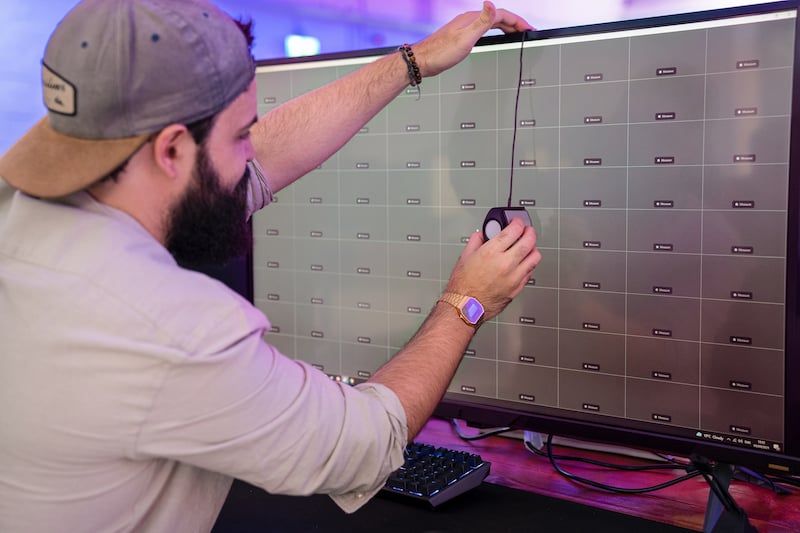
Click here if you want to see our in-depth explanation of how we test each and every monitor.
Do ultrawide monitors affect FPS?
Due to the increased screen size of an ultrawide monitor, it does mean that the FPS will be affected because there will be more pixels across the screen. This means that your GPU will have a much higher workload in order to maintain the efficiency of the frames per second. So much so, that you may even need to consider purchasing a more powerful GPU.
To help give you an understanding of the pixel count difference between monitors affecting FPS, here is a quick breakdown:
| Monitor Type | Pixel Count |
|---|---|
| 1080p standard monitor (16:9) | 2,073,600 |
| 1440p standard monitor (16:9) | 3,686,400 |
| 1080p ultrawide monitor (21:9) | 2,764,800 |
| 1440p ultrawide monitor (21:9) | 4,953,600 |
| 1080p super ultrawide monitor (32:9) | 4,147,200 |
| 1440p super ultrawide monitor (32:9) | 7,372,800 |
As you can see, the ultrawide monitors use a significant amount more pixels than the standard monitors, which will mean that the FPS in both 1080p and 1440p ultrawide monitors will be impacted more than if you were to use a standard monitor. This is most apparent when comparing the 1440p monitors, where the pixel figure reaches ridiculous heights.
Can you split an ultrawide monitor?
Yes, it is possible to split an ultrawide monitor, though how to do it will depend on what software you’re using. Both Windows and macOS come with the ability to help you split an ultrawide monitor, which will allow you to make proper use of additional screen space and optimize your productivity.
How to split an ultrawide monitor in Windows
After you’ve connected your monitor to your Windows desktop, head over to Settings and select ‘Display’. This will allow you to view multiple display settings so that you can decide which one you prefer. Once you’ve selected your layout, you’ll then be able to click and drag files, web pages, and other items between the two screens.
How to split an ultrawide monitor in macOS
After you’ve connected your monitor to your Mac computer, open System Preferences and click on ‘Display’. After doing this, you’ll need to uncheck the ‘Mirror Displays’ function, which will alert your Mac computer that you want to use both monitors separately. After you’ve unchecked this, then you can head over to Arrangement, where you will be able to customize each display to your preference.
Are ultrawide monitors better than dual monitors?
The answer to this will greatly depend on what type of video games you like to play, as well as whether you require the monitor for practical purposes, such as video editing.
Out of the two types, many would agree that ultrawide monitors are the better ‘all-around’ choice because they are able to provide the most immersive gaming experience, as well as value for money. This makes them ideal for people that want a monitor that they can use for a variety of purposes, including casual gaming, general entertainment, and work purposes. An ultrawide monitor is also the best bet for professional gamers, as they will be able to offer a more smooth and immersive experience than dual-monitors, albeit at the cost of a more powerful GPU.
In contrast, out of the two options, a dual monitor setup will likely be the better choice for casual gamers that want to surf the web while playing, or for streamers that want the ability to be able to respond to their viewers in real-time. This is because a dual monitor provides the advantage of being able to multitask, all while still being able to still play the game. Of course, if you plan on using dual monitors strictly for gaming, then there is a chance of reticule splitting, which will make the gaming experience less seamless.
FAQs
Are ultrawide monitors good for gaming?
Though standard-sized flatscreen monitors are the norm, there are some benefits to choosing to opt for an ultrawide monitor instead. Most noticeably, ultrawide monitors are able to provide the advantage of an increased FOV (field of view) in many games. This means that you’ll be able to make the most out of increased peripheral vision, which will not only help to make the game feel more immersive but also help you to pinpoint opposing players more easily.
Why are ultrawide monitors so expensive?
Ultrawide monitors are a hot commodity right now, which helps to explain why they tend to come with a heftier price tag than other types of monitors currently available on the market! In addition to that, just like their name suggests, ultrawide monitors are wider than other types of monitors, meaning that they come with bigger display screens. This means that they require more materials to make, which in turn makes them more expensive.
Final word
So, there you have it, our breakdown of the best ultrawide gaming monitors available in today’s market. We tried to provide an option for all kinds of consumers but ultimately if you’re looking for the best ultrawide gaming monitor then you’re going to have to pay the price.
Whether you go for 34-inch or 49-inch, 21:9 or 32:9, you’re in a real treat and a immersive experience for gaming. These displays are also of course fantastic for productivity. Want to see more? Then feel free to check out our separate best OLED ultrawide monitor guide.

